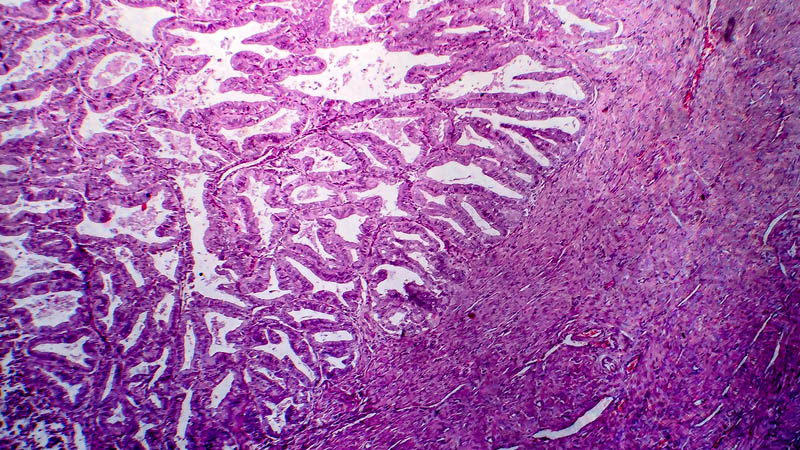Diagnostics, treatment and follow-up after management of ovarian cancer
Mariusz Bidziński, Krzysztof Gawrychowski, Maciej Krzakowski
 Affiliacja i adres do korespondencji
Affiliacja i adres do korespondencji
Introduction
In Poland, 1957 deaths due to ovarian cancer were registered in 1999. Ovarian cancer is the most frequent cause of death among the female genital tract cancer. In Poland it accounts for the third place among all deaths cause in women. The mortality structure for ovarian cancer was 5.66% in 1999, and the standardized mortality factor was 6.7/100 000 women. It has been estimated that in about 5-10% of ovarian cancer is familial hereditary one. The most important risk factor of ovarian cancer is developing of this disease in firs-degree relatives ( mother, daughter, sister ). The risk significantly increases with strong family history meaning two first-degree relatives with ovarian cancer. Familial hereditary ovarian cancer falls into three categories: site-specific familial ovarian cancer, breast-ovarian cancer syndrome, and Lynch syndrome type II. The true, familial ovarian cancer and/or breast cancer develops mainly due to mutation of BRCA1 which is located on the long arm of chromosome 17q21. The mutation of BRCA2 gene ( location on chromosome 13q21 ) is also responsible for ovarian and breast cancer syndrome. It has been recommended that women with two or more first-degree relatives with ovarian carcinoma may be offered prophylactic oophorectomy after completion of childbearing or age 35 years. But one should emphasize that there is still insufficient evidence for or against this procedure to reduce ovarian cancer risk. It has been suggested that development of primary peritoneal cancer is not prevented by prophylactic oophorectomy. The ovarian cancer disseminates intraperitoneally in most cases. The frequency of pelvic lymph nodes metastases found during primary surgery depend mainly on staging. The disturbances of lymph circulation caused by neoplastic cells infiltrating the peritoneum effect in ascites. The transudation of cancer cells or free fluid into pleural cavity is also observed.
The beneficial prognostic factors are as following:
· young age
· good general condition
· histological type other than mucinous and clear cell
· low stage
· well differentiated tumors
· small initial tumor volume
· lack of ascites
· post surgical residual volume Ł 1 cm
· disease-free time interval









